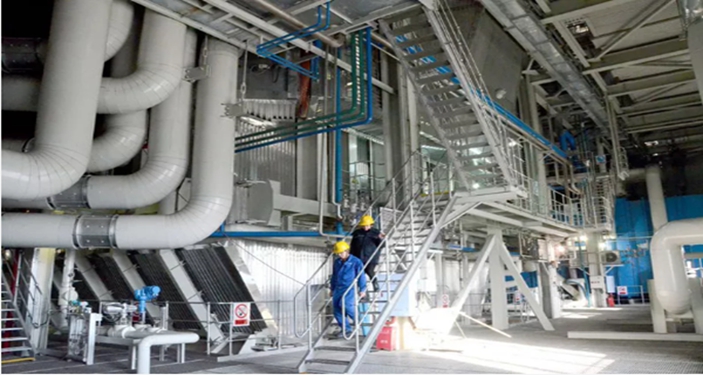In 2015, Omron innovatively proposed a new intelligent manufacturing concept, i-Automation!. As a result, this innovation storm instigated by Omron extends step by step from the “manufacturing site” and leverages the future of innovative automation. Specialization and innovation have become i-Automation! A solid footnote to success.
By 2020, we will be confronted with the COVID-19 that has swept the world. The increasing geopolitical friction will make the global economic atmosphere more tense. Under the superposition of various uncertainties, what made Omron achieve offensive growth in the first half of the year? I-Automation! What new chapters have been added to the theory of evolution?
On August 31, 2020, Omron Automation (China) Co., Ltd. President Hiroshi Ohashi and Gongkong ® President Pan Yingzhang practices the annual agreement between the two parties through cloud based dialogue and reveals the answers to the above puzzles.
According to the Nikkei Chinese website on August 20, the real gross domestic product (GDP) of 24 major countries in the world from April to June 2020 shrank by 9.1% year on year, and the impact of the COVID-19 epidemic is very prominent. These 24 countries account for two-thirds of the world’s GDP, with only China achieving positive growth.
Faced with this sudden stress test, Omron shifted from passive defense to active attack and defense. “According to our investigation, customers were greatly affected after the Spring Festival, and by mid March, their production activities had resumed by 50-70%,” said Da Chang Hezhi.
According to Da Chang Hezhi, Omron’s performance in the second quarter of this year was impressive: a 70% increase compared to the first quarter and a 20% increase compared to the same period last year.
year.
He believes that there are three main reasons: firstly, in the first quarter, due to the impact of the epidemic, everyone was in a wait-and-see state, and project investment was temporarily postponed. After April, the investment direction became clearer; Secondly, medical supplies such as masks, artificial ventilators, and non-contact thermometers have become a “hard currency” in the market, and the demand for such equipment has surged. Omron has achieved considerable success in the essential goods market; Thirdly, after April, the suspended customer demand was rapidly released, and the demand for components increased rapidly. Omron had anticipated this trend and prepared inventory in advance, resulting in an improvement in IAB (Industrial Automation Business) performance.
“In summary, this epidemic means more opportunities for Omron,” said Da Chang Hezhi. For example, the market for essential goods such as medical supplies is an area that Omron (IAB) has not been involved in in the past; For example, more customers are cross-border producers of mask machines and urgently need Omron to provide them with supporting solutions and products.
How to respond quickly and seize opportunities is crucial. On the one hand, Omron timely learns about customer needs, disassembles them into corresponding supply products, prepares in advance, and actively responds; On the other hand, overseas markets such as the United States, Europe, and Japan have been affected by the epidemic and have stopped production, while Omron has already resumed work and production in China, and can actively and timely respond to the needs of overseas customers. At the same time, Omron also organized and analyzed the impact and changes of the epidemic on customer production sites and work itself, actively thinking about i-Automation! How to empower customers and turn challenges into more opportunities.
For the future development of the industrial automation market, Da Chang He Zhi still maintains an optimistic attitude. At present, Omron is optimistic about the secondary battery, food and beverage, semiconductor and other industry markets.
I-Automation! Diexin
Visualization is required at the manufacturing site
The methodologies for intelligent manufacturing in Japan and China are not the same. Da Chang Hezhi stated that “Made in China” promotes practical operations through concepts, anticipates the concepts of informatization, digitization, and intelligence, and then gradually implements them on manufacturing sites. “The Japanese manufacturing industry does not place too much emphasis on the concepts of informatization, digitization, and intelligence, but focuses on optimizing and improving every detail of the manufacturing site.”
From i-Automation! From the birth of concepts to the gradual implementation and upgrading of integrated (control evolution), intelligent (intelligence), and interactive (new human-machine cooperation) in manufacturing sites, Omron is more concerned with how to help customers solve practical problems, innovate manufacturing sites, and innovate the future of automation.
Building a modern factory has become a mainstream demand at present, but Da Chang He Zhi directly points to customers’ “misconceptions”. “Building a modern factory is not just about achieving informatization and intelligence. Omron believes that improving production efficiency and product quality on the manufacturing site, reducing energy consumption, and visualizing is the first step.”
At the upcoming 22nd China International Industrial Expo (CIIE), Omron will showcase intelligent unit production lines featuring human-machine collaboration. This production line integrates advanced technologies unique to Omron such as AI, IoT, MOMA ※, and collaborative robots. Based on big data analysis, it is actually applied in Omron’s own factory’s near future production management system.
By visualizing the management of homework and process status, Omron creates a self disciplined production site, reducing talent training time by half; Through traceability management, the defect outflow rate caused by manual operation errors is reduced to 0; By leveraging the advantages of both humans and robots and improving automation levels, production efficiency can be doubled.



Leave a comment
Your email address will not be published. Required fields are marked *